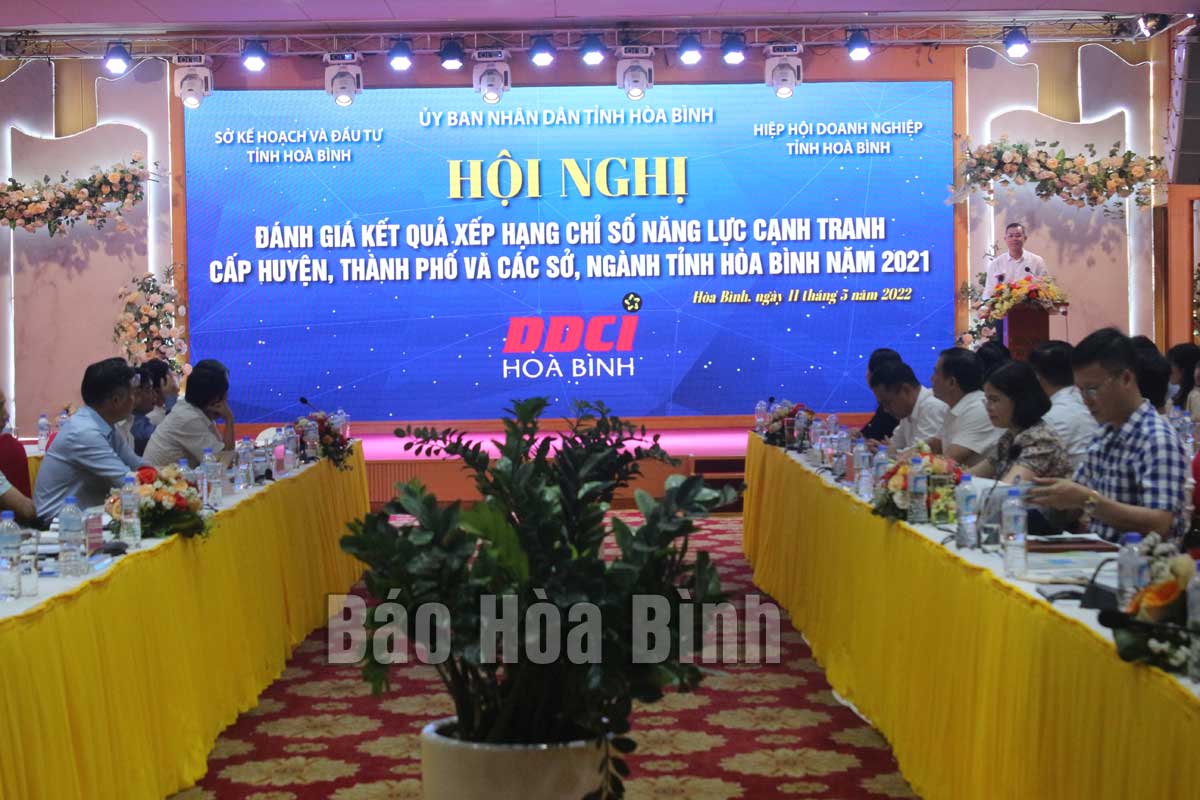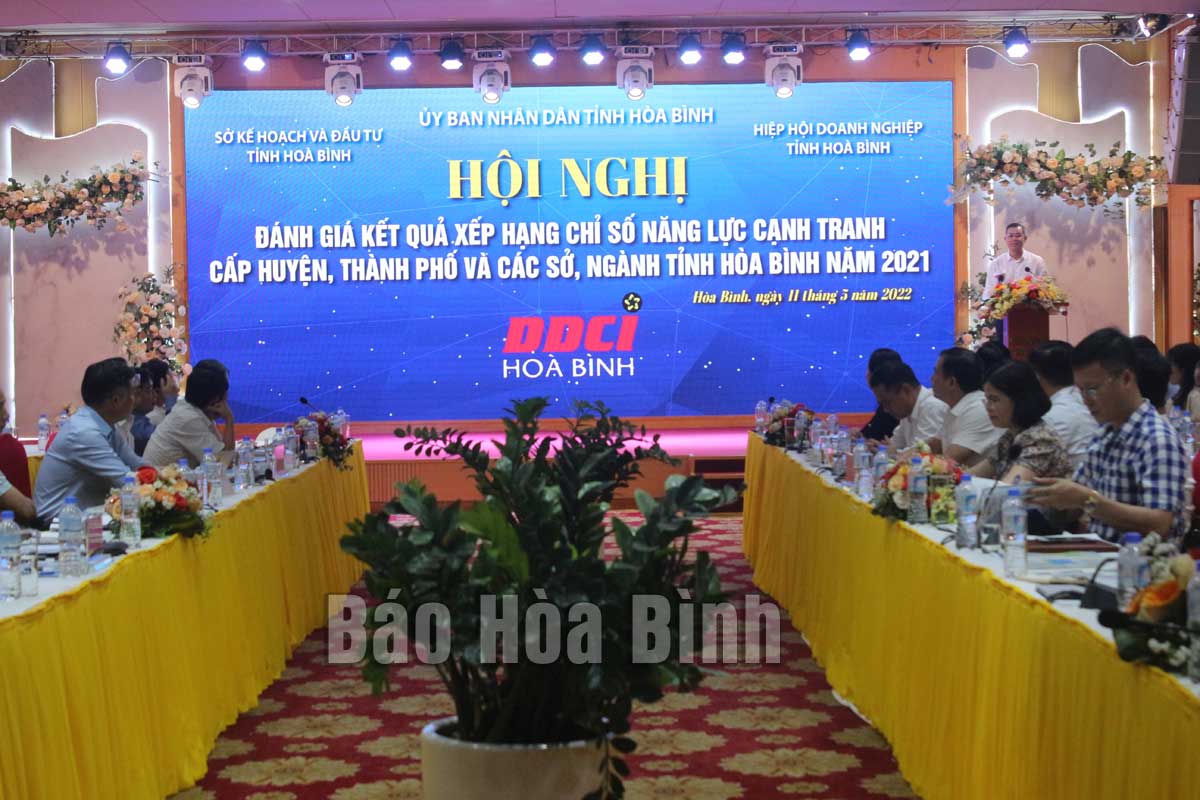



Ngo Van Tuan, Member of the Party Central Committee, Secretary of the Provincial Party Committee, Head of the Provincial National Assembly Delegation delivers a speech at the event.
The DCCI was first developed in Vietnam by Economica Vietnam and Lao Cai People’s Committee in 2013. The system was developed to measure the quality of local economic governance at the district and city administrative levels. These entities govern and interact directly with household businesses, enterprises, cooperatives and investors.
The DDCI is an important indicator to evaluate the quality of management and administrative activities of 26 departments, divisions, and branches in 10 districts and cities. An independent consultant surveyed the DDCI Hoa Binh covering 1,000 enterprises, cooperatives and business households, yielding 957 responses to the query.
Yen Thuy district received 89 points and ranked "Excellent”, while Da Bac, Hoa Binh city, Mai Chau, Lac Son, Kim Boi, Luong Son, Tan Lac, Cao Phong fell into the "Good” group. Lac Thuy district finished in the "Average good" group with 67.83 points.
The Department of Planning and Investment ranked first in the DDCI ranking with 79.39 points. It was followed by the Department of Natural Resources and Environment with 78.40 points, and the Department of Agriculture and Rural Development came third with 77.75 points.
According to the assessment of the Provincial Business Association, the DDCI Index was piloted on a trial basis in 2021. The results yielded positive support, and useful comments on the sectors and localities in the province. Business households participated widely, as did enterprises and cooperatives. They shared opinions, supported the policy of promoting administrative reform and worked together to improve the business investment environment in the province.
On the basis of the 2021 results, the Provincial Business Association proposed the Provincial People's Committee to direct relevant sectors and units to study, amend and supplement the indicators, and submit it to the Provincial People's Committee as a basis for implementation. They also suggested departments, agencies, sectors and localities to continue to improve the business investment environment and the Competitiveness Index on the basis of the results of the annual PCI and DDCI assessment.
Speaking at the event, Secretary of the Provincial Party Committee Ngo Van Tuan stated the announcement of 2021 DDCI is the starting point. In the coming time, departments, branches, districts and cities will continue to work closely to glean the most accurate set of indicators on the quality of public service in the economic sector, measured by the satisfaction of enterprises and cooperatives.
Hoa Binh’s PCI ranking in 2021 was very low, down 18 places compared to the previous year.
According to Tuan the assessment of the PCI and DDCI Index reveal similarities. Therefore, he said he hopes that businesses can be forthcoming with suggestions to departments, agencies and localities in an effort to improve the quality of public services for enterprises operating in the province. This, he said, will result in improving the general business environment.
Concluding the event, Chairman of the Provincial People's Committee Bui Van Khanh suggested that based on the assessments, the departments and administrations could improve public service delivery to their vendors.
He also requested the Department of Planning and Investment to urgently advise the Provincial People's Committee to issue the DDCI Index in 2022 for official implementation./.